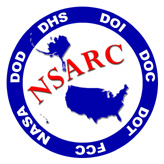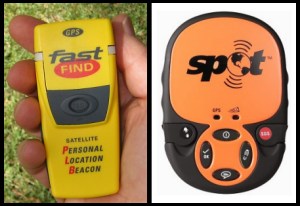
2009 Year End Recap
 | Equipped To Survive Foundation 2009 Year End Recap |
![]() To Friends and Supporters of the Equipped To Survive Foundation,
To Friends and Supporters of the Equipped To Survive Foundation,
As 2009 draws to a close, it is once again time to review what has been accomplished during the past year. �It was far from a typical year.
 Nearly half the year, starting in early June and running
through the end of October, was taken up by an all-consuming effort to protect
one of our most essential survival tools, our knives.� As Chairman and
Executive Director of Knife Rights, one of the other hats I wear, I led a grassroots
fight against a U.S. Customs attack on pocket knives that would have redefined
assisted opening knives and one-hand opening knives as switchblades. You can
find out more about that successful fight at www.KnifeRights.org, but the bottom line
is that a coalition of industry and grassroots managed to pass Federal
legislation that should settle that issue permanently and prevent the Feds from
using the Federal Switchblade Act to restrict our right to purchase, own and carry
these extraordinarily useful and practical survival tools.
Nearly half the year, starting in early June and running
through the end of October, was taken up by an all-consuming effort to protect
one of our most essential survival tools, our knives.� As Chairman and
Executive Director of Knife Rights, one of the other hats I wear, I led a grassroots
fight against a U.S. Customs attack on pocket knives that would have redefined
assisted opening knives and one-hand opening knives as switchblades. You can
find out more about that successful fight at www.KnifeRights.org, but the bottom line
is that a coalition of industry and grassroots managed to pass Federal
legislation that should settle that issue permanently and prevent the Feds from
using the Federal Switchblade Act to restrict our right to purchase, own and carry
these extraordinarily useful and practical survival tools.
Our efforts to improve standards for distress beacons continued on many fronts.� In the RTCM SC 110 subcommittee, the focus this year was on updating the EPIRB standard to reflect the advances we've incorporated into the PLB standard and completing Appendix G of the new PLB standard that will, for the first time, include rigorous simulator based testing of GPS receivers included in PLBs and, in turn, EPIRBs.
We made good progress on the revised EPIRB standard, building on the revisions incorporated into the new PLB standard we finished last year.� �As a result of valuable research and input from the Coast Guard’s Larry Yarbrough, we have added new ergonomics standards and tests that will better ensure that an EPIRB can be securely carried without imperiling the seamen trying to save lives, including their own.� Other changes resulting from this research will help prevent false alerts.�
The new Appendix G will stress GPS receivers under simulated conditions in both land and marine scenarios. It will provide a baseline minimum level of performance, while also encouraging manufacturers to do even better. It is specifically designed so that we should be able to readily raise the minimum as better GPS receivers are developed and become available.� This is, itself, a unique concept in standards development, which too often sets a benchmark that becomes obsolete too quickly.� Appendix G is essentially completed and should be published early next year.� The marine portion of these tests will also be incorporated into the revised EPIRB standard.
RTCM subcommittee SC 128, the formation of which was at least partly the result of ETS efforts, �got down to work this year developing a standard for SENDs (Satellite Emergency Notification Devices), which will cover distress alerting devices such as the SPOT Satellite GPS Messenger. �We started with the new PLB standard and are working to modify it to deal with the unique issues presented by SENDs which may do much more than simply send out a distress alert. �The goal is to ensure that the device itself should function reliably and interface in a functional manner with the user seeking to send a distress message.
SC 128 is dealing with the hardware side of the issue, but there’s also concerns based on shortcomings observed to date with SPOT, about the alerting and SAR notification process. �While SPOT’s GEOS call center subcontractor has improved their operations, the bigger concerns remain as new entrants look at this growing market. �The issues revolve around how a distress alert sent by an individual via a SEND is responded to, ensuring that the correct SAR authorities are notified in a timely fashion and in an acceptable manner.� Anything less, whether intentional or not, can lead to unnecessary fatalities.
 The National Search and Rescue Committee (NSARC), a federal-level committee that coordinates civil search and rescue matters
within the U.S., has taken up that challenge by establishing a SEND Working
Group to "develop a standing mechanism that will ensure that new search and
rescue alerting and locating technologies can be properly reviewed and
integrated with the SAR response system in the United States.� This may include
recommendations for policy or regulatory initiatives." (You can read the
complete Terms of Reference for the SEND WG here)� I was invited to participate and the first meeting of the SEND WG was
held in Washington earlier this December in conjunction with the RTCM committee meetings. The coming year promises to be a busy one wiht this working group.
The National Search and Rescue Committee (NSARC), a federal-level committee that coordinates civil search and rescue matters
within the U.S., has taken up that challenge by establishing a SEND Working
Group to "develop a standing mechanism that will ensure that new search and
rescue alerting and locating technologies can be properly reviewed and
integrated with the SAR response system in the United States.� This may include
recommendations for policy or regulatory initiatives." (You can read the
complete Terms of Reference for the SEND WG here)� I was invited to participate and the first meeting of the SEND WG was
held in Washington earlier this December in conjunction with the RTCM committee meetings. The coming year promises to be a busy one wiht this working group.
The combined RTCM subcommittee SC 101/110 has continued with development of a new standard for a low-cost handheld VHF radio with integrated GPS and simplified GMDSS (Global Maritime Distress and Safety System) distress alerting capabilities.� This work incorporates much of the GPS related work done for Appendix G of the PLB standard as well as coordinating the standard with international GMDSS standards as recently updated.� The key has been in striking a balance between cost and performance so that it provides the added features the Coast Guard wants, in order to make their job of saving lives more effective, without making them so expensive that nobody will buy it. Good progress has been made and this standard should be published by the middle of next year with any luck.�
 Despite being sidetracked by the battle with
Customs, ETS conducted two notable beacon tests this year, plus another that is currently under analysis.� The first evaluated
the ground-breaking, smaller, lighter and less expensive McMudo Fast Find PLB. Our results suggest that McMurdo did a pretty fair job with this new PLB.
Despite being sidetracked by the battle with
Customs, ETS conducted two notable beacon tests this year, plus another that is currently under analysis.� The first evaluated
the ground-breaking, smaller, lighter and less expensive McMudo Fast Find PLB. Our results suggest that McMurdo did a pretty fair job with this new PLB.
SPOT also announced their second generation SPOT earleir in the year and this fall we conducted our initial hands-on evaluation once they started delivering product.�This evaluation identified the notable improvements in this smaller and lighter SPOT, but also highlighted some continuing issues of concern. Due to a logistic error on the part of SPOT, turned out the first sample we received wasn't a production SPOT 2 after all and wasn't waterproof in the least. We retested SPOT 2 turned up some interesting discoveries. Only a few weeks later SPOT issued a recall, which served to explain some of the strange battery inidcations we had gotten. We'll have another go with the revised product once they solve their battery status problems.
![]() Not much new to report with regards to my work
with the SAE S-9 Cabin Safety Provisions Committee and SAE S-9A Safety Equipment
and Survival Systems Sub-committee.� These committees develop safety and
survival standards for transport category aircraft, airlines and, by default,
general aviation. �As has been the pattern for some time, progress is
excruciatingly slow. On a positive note, we did publish a new Aviation Life
Vest standard.� We’ll just have to see what the FAA does with this.�
Not much new to report with regards to my work
with the SAE S-9 Cabin Safety Provisions Committee and SAE S-9A Safety Equipment
and Survival Systems Sub-committee.� These committees develop safety and
survival standards for transport category aircraft, airlines and, by default,
general aviation. �As has been the pattern for some time, progress is
excruciatingly slow. On a positive note, we did publish a new Aviation Life
Vest standard.� We’ll just have to see what the FAA does with this.�
The new Aviation Life Raft standard is still being held hostage by one representative of a major U.S. airliner manufacturer and one of their primary suppliers who remain determined to oppose virtually any safety advance that might possibly increase costs, even when others in the industry refute their dubious claims or objections. Safety concerns appear to remain a distant second.� Even the successful ditching of US Airways Flight 1549 in the Hudson didn't seem to make much of an impact.� Doesn't this attitude make you feel safer knowing that you put your life in their hands every time you fly in their aircraft?
The improvements we are trying to make are based on the life raft tests and research performed by myself and ETS Foundation over the past decade that revealed serious deficiencies in many aviation life rafts. I and those others on the committee dedicated to saving lives will continue to fight for better safety and survival equipment and oppose these efforts to place your safety second to their questionable corporate bottom-line concerns.
We have continued to add additional product reviews and new product information to the ETS site, as well as revising and updating old reviews and articles.
The ETS Survival Forum continues to experience a good deal of traffic and membership continues to grow.� Mark (Blast) Vorderbruggen very generously volunteered and ably stepped in to assume Administrator duties when our longtime Admin, Chris Cavanaugh, departed.� Charlie Gallo suggested we add an Urban Survival section to the forum and since no good deed goes unpunished, accepted an appointment as Admin of that new and popular section. Marty Focazio and Rick Johnson continue their help supporting the forum.� Without these good people, the forum would not last, so I am deeply grateful for their time and efforts.
Once again the April Fools (March 32nd) Edition of ETS Survival News was well received.� I owe a debt to Clifford Grout and Chris Cavanaugh, whose warped sense of humor compliments my own and helped make this such a success. If you missed it or previous editions, you can find them all here on ETS.
This past year I provided survival education presentations at a number of aviation gatherings including various EAA chapters, AOPA Aviation Summit and Cirrus Owners and Pilots Association (COPA).� COPA continues to support my delivery of a 3-hour survival module at their many Cirrus Pilot Proficiency Programs.
I was honored this year to be invited to present a series of talks on survival gear at the Boy Scouts National Order of the Arrow Conference.� It was exciting to be involved with thousands of energetic, well-behaved and highly motivated young people.� It keeps all the bad news you read about so many youth today in perspective.
I continue to provide free advice and information on survival equipment to troops embarking to the Middle East and to many life support personnel in the U.S. military.� It was gratifying at the annual SAFE Association Symposium to again have so many life support specialists in the military stop by the booth to thank me.
The poor economy has made it very difficult for us financially.� Despite using every available means to economize, there is no escaping that it costs a good deal of money to participate in the SAE, RTCM and NSARC committees and working groups.� New technologies means additional challenges to be dealt with and I remain the sole consumer representative on these committees and working groups.
Over the years my participation has evolved from being a not particularly welcome interfering pain in their butt to being accepted as providing useful and vital contributions.� The input I provide helps make for better survival gear and provides the consumer with better information with which to make a purchase decision upon which their life may depend.
All this work is only possible because of generous support from the public, including many of you. Thanks again to all our contributors this past year who recognize the value of the work we do and the tremendous value we provide for each dollar donated.
As you can see from this year's report (and previous years'), your investment is producing excellent returns. The cold hard fact is I cannot continue to do this without financial support from you.� Please contribute generously so that I can continue my work on your behalf. You can make a tax-deductible donation here.
Equipped To Survive Foundation's Form 990 and year end recaps from prior years can be found on the ETS Foundation Home page.
Respectfully submitted,
Doug Ritter
Chairman
Executive Director
Equipped To Survive Foundation
|
Executive Director: Doug Ritter
© 2009 Equipped To Survive Foundation, Inc. - All rights reserved.
Check our Copyright
Information page for additional information.